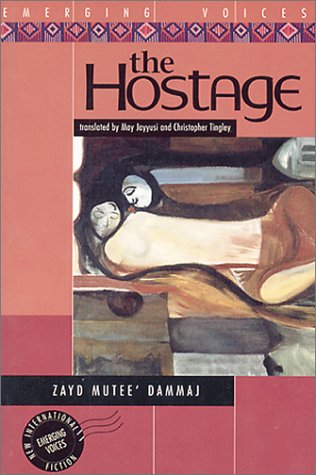
#289
Title:
Hostage: The Incredible True Story of the Kidnapping of Three American MissionariesAuthor: Nancy Mankins
Publisher: W Publishing Group
Year: 2001
Country: Panama
256 pages
Panama.
Notes on the cover: 1) The circling of the
t
seen as a cross is beside the point. There's no evidence in the book
that people were kidnapped because they were Christians or missionaries.
2) No one was tied to a chair.
I'll say at the outset that what
the author went through was terrible and I have great sympathy for her
and the other people involved. Nancy Mankins has an important and
dynamic story to tell about the kidnapping of three missionaries,
including her husband, by Colombian guerrillas (probably FARC) who
crossed into Panama and took the men captive. That said, the book is
very poorly written in a number of ways, and the content at times so
offensive as to inspire incredulity. Someone should have given Mankins
better writing assistance.
First, the shape of the story. Despite
the compelling subject matter, the story drags considerably. It was a
narrative error to intersperse the events of the kidnapping with the
chronicle of daily life in the years leading up to the kidnapping--not
much is known about what happened to the men after they were taken, and
the climactic telling of the event occurs as the first chapter. This
organizational strategy tells a story that sags and quits, disappointing
the reader.
Second, style. Mankins flattens the emotion inherent
in the story even further through wooden writing and repetitive clichéd
descriptions. For example, multiple children are described over and
over as "precious." The dialogue rarely rings true, and Mankins relies
on telling rather than showing. If this were a straightforward narration
of events, this wouldn't be so intrusive, but the artificial and
superficial nature of the language highlights the emotional
disengagement. In addition, Mankins spends whole paragraphs describing
the steps by which a character engages in some trivial activity, such as
preparing a meal. This degree of unnecessary and concrete detail
interrupts and slows the narrative further.
Third, dramatic
impact and identification. Because of these technical factors, I don't
care about or empathize with Mankins's characters. This disjunction is
troubling. The narrative asserts interiority, but I never believe it.
Mankins will say she is scared or happy, but does not manage to convey
the emotion to the reader. I longed for a more sophisticated and
heartfelt account of Mankins's engagement with the community, her fears
and hopes, and her faith. However, my overall impression is of emotional
guardedness, not expressiveness. This may be reasonable given what
Mankins went through, but again, a straightforward and factual account
would be a more forgiving vehicle for this level of affect. This
rendering, however, is like watching
Leave it to Beaver through
a veil of static--it's hard to follow, hard to care, and the characters
seem to be posturing rather than feeling emotion.
Fourth, the
faith and creed espoused by Mankins is an extreme, evangelical, and
angry version of Christianity. It's hard for me to believe that no one
participating in these events was trustworthy or helpful except for
Christians, but this is what Mankins repeatedly asserts by identifying
who is Christian and who is not coupled with their actions (or her fear
about their intentions). Mankins's church is of the "faith, not works"
variety adequately illustrated by the
Left Behind series.
Translation: If you don't believe as we do, you will burn in hell no
matter what good you have done in the world. The Panamanian indigenes
are repeatedly described in terms of their spiritual darkness, harsh
expressions, and other dubious characteristics. A glaring example of
this world view may be found in two pregnancies Mankins describes. In
the first, Mankins is called when a local woman is having a difficult
labor. Mankins dithers about, decides that she can't be helpful, and
goes home to pray. The reader doesn't get much insight into her prayers,
however, but instead is subjected to Mankins's assertions of her fear
and discomfort with the situation. She is called back repeatedly, and
rather than describe for the reader her uncertainty, or her prayers, or
her concern for the people involved, she instead becomes fixated on an
indigenous medication someone gives the pregnant woman. It becomes clear
that Mankins conflates local medicine with black magic. Apparently she
is too busy being afraid and critical to be helpful. When she decides
that the evil elixir is not working, her criticism deepens. Yet later in
the book, one of the missionaries is having a difficult pregnancy and
goes into labor prematurely. She is in a hospital and is given medicine
that Mankins does not think is working. Does Mankins attribute this to
Satan or evil practices? She does not, nor does she seem to be aware
that these parallel stories illuminate her prejudices. This is a
xenophobic narrative indeed, which deeply troubles me. I see little love
for, but a great deal of suspicion of, those unlike oneself, a
disturbing attitude for missionaries living in a community for many
years.








